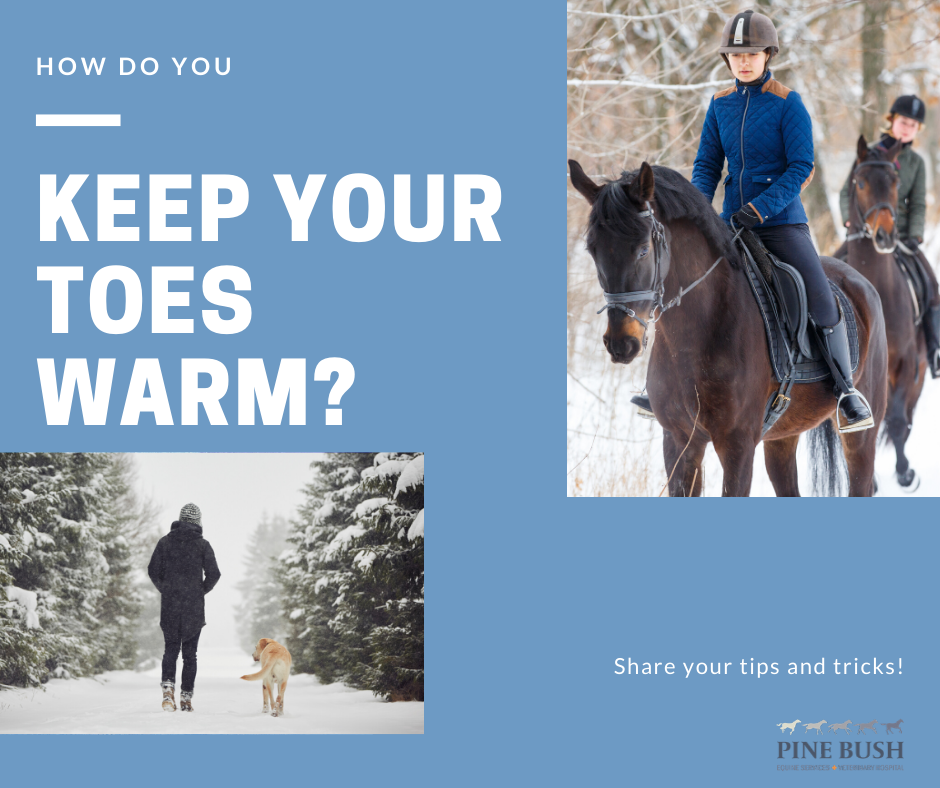Winter equine activities can be miserable when your toes are cold. We did a little research looking for advice on how best to battle this cold weather nuisance. Our veterinarians will often use disposable foot warmers in their boots to provide protection on long days in frigid temperatures. Most advise letting the packets warm up before placing them in their boots to get the maximum benefit from them. Other helpful tips for keeping those digits comfy include:
- A proper pair of boots rated for our climate. This means they should be rated for temperatures in the teens since our average low in our coldest month of January is 17 degrees Fahrenheit. (USClimateData.com). Consider purchasing your boots a little roomy to be sure they are not too tight when you wear your bulky socks.
- Once you have purchased your comfy boots, keep them dry. Boots should not only be precipitation proof but should be allowed to dry out on the inside too. Eric Larsen, the Polar Explorer, even suggested wearing a plastic layer between your sock and foot explaining it would be clammy but warmer. I confess to some skepticism about the ability to function without distraction if I did this. Perhaps a pair of tech-y sweat wicking socks would be more comfortable overall.
- Bringing us to ‘good socks’. Wearing socks that offer insulation and keep sweat away from feet are a must. Socks made of wool or acrylic offer this protection. By all means avoid the cotton sock.
- More high tech options include battery operated heated socks or foot beds for use within your shoes are other options. These are not recommended for people with circulatory issues.
- The very low tech options include advice the riders of the Tour de. France when approaching the Alps. These riders will place a layer of paper—a program from any by stander—between their shirt and their skin as a layer of insulation. In a pinch you can wrap a paper towel around your toes before placing them in your boots.
- Finally, more advice from Eric Larsen, start warm. When your core body temperature is low, your body starts to shunt blood away from your extremeties making them even colder to preserve the core. And of course, keep your core warm while you are out there.
If you have tips or tricks you would like to share, we would love to hear from you!

